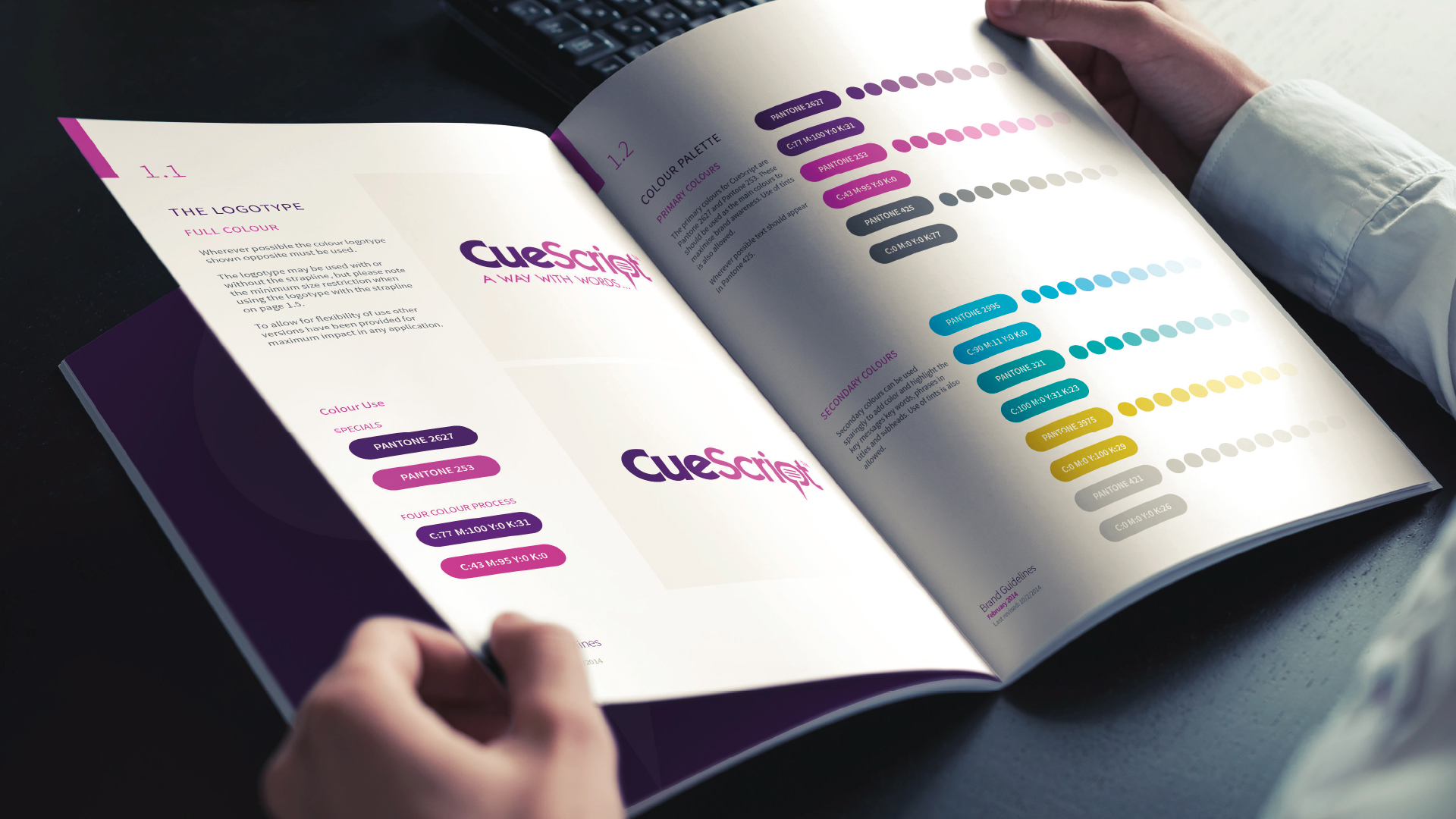Your company’s brand is the combined and overall look of all its communications and effective branding is achieved by the consistent use of specific visual elements to create distinction. This includes everything from specific fonts, colours and graphic elements – all the constituent parts that helps to create a strong and recognisable brand that stands alone even without the logo. We often refer to this as ‘secondary styling’ but its importance should not be underestimated.

What are brand guidelines?
Brand guidelines are a set of rules and tools that determine how you use your branding elements. The guidelines are used by designers, writers, marketing professionals and anyone else who makes use of your brand’s elements when they create marketing materials. These guidelines will usually be presented as a pdf, so they can be easily updated or added to as your brand grows.
Why are brand guidelines important?
Effective brand identity is achieved by the consistent use of specific elements to create a strong and recognisable brand. Your brand affects your business’s ability to achieve its objectives. It’s what sets you apart from your competitors and instils recognition and loyalty in your client and customers. Consistency is key to your brand’s success and the tools by which this is achieved are brand guidelines.
Do I need brand guidelines?
When distributed to service providers, brand guidelines provide tools for anyone working on marketing materials to ensure your brand remains consistent. If you use or intend to use multiple service providers then brand guidelines are imperative to avoid inconsistencies that will weaken or confuse your brand. If you are using a single branding agency to produce all your collateral, across both print and digital, then these may not necessarily be required as the branding agency should automatically act as your brand guardians.
What should brand guidelines include?
No two businesses are the same so the elements that are included in your brand guidelines may vary.
However, brand guidelines would typically include:
Logo Use
Correct Uses – Full colour, Single colour, Mono and Reversed (If required)
Incorrect Uses
Positioning – Min Size Requirements
Positioning – Min Space Requirements
Typography – Main Font Uses
Colour Palette – Primary & Secondary
…but may also include for example:
Secondary styling (overview of implementation of chosen style)
Photography style
Product branding (If applicable)
Website style (overview only)
Infographics (styling of charts, maps & icons)
Stationery (overview)
Print collateral overview ( A4 brochure cover & spread)
Print advertising (typical A4 ad)
Print advertising (typical A5 ad)
Digital advertising overview (Social Media)
PowerPoint (overview example 4pp)
Exhibitions & Signage (overview)
Merchandise (overview of mugs/pens/apparel)
How do you establish your brand guidelines?
As a branding agency Treefrog know good foundations are essential to building your brand. A logo sits at the core of everything, but your brand is so much more…
Treefrog have a wealth of experience building brands for companies of all shapes and sizes across the globe. We learn about the heart of your business and discover what makes it tick. Then, by drawing from this learning process, we can create a whole range of relevant, distinctive and cohesive brand assets to ensure your business looks truly awesome.
Get in touch to find out more about our branding service and discover how we can help your business grow and help your brand gain a competitive edge.


